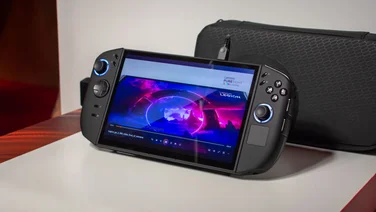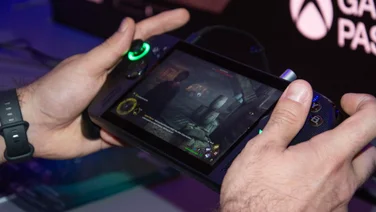To help us provide you with free impartial advice, we may earn a commission if you buy through links on our site. Learn more








CES 2018 is in full swing, and a bevvy of excellent tech announcements have already been let loose to the public. Chief among them is the big announcement from HTC, and the unveiling of the intriguing new VR headset, the HTC Vive Pro.
READ NEXT: The best CES announcements
No, this isn’t the HTC Vive 2 but rather, a beefed up model to go alongside the existing Vive offering. Supporting a 3K resolution and new OLED displays, the HTC Vive Pro is a very interesting prospect for VR enthusiasts. Here’s everything we know so far about the HTC Vive Pro following the CES 2018 announcement, and our first impressions.
HTC Vive Pro: Everything you need to know
HTC Vive Pro UK release date: When’s it coming out?
Finally, HTC Vive has spilled the beans about its latest VR headset. Along with the UK price – which you’ll find below – the firm announced that the new HTC Vive Pro will launch in the UK on 5 April.
HTC Vive Pro UK price: How much will it cost?
A few months down the line and HTC Vive has finally lifted the lid on how much their next-generation VR headset will cost. How much I hear you cry? Well, HTC’s Vive Pro headset will cost a whopping £799 at launch.








For reference, this sky-high price is £40 more than what the original headset launched at – which is now only £400 – and the Oculus Rift is currently £400, too.
To soften the blow, that price comes with a six-month subscription to their Viveport catalogue, which offers five free VR titles a month from a library of 400 games.
Preorders are now available on HTC Vive’s website, with shipping expected to begin on 5 April. The headset can also be preordered at GAME.
HTC Vive Pro features: What’s new?
And now to what’s new with the HTC Vive Pro. For starters, and what’s categorically the most important new feature, the HTC Vive Pro boasts an increased resolution of 2,880 x 1,600 pixels (or a resolution of 1,440 x 1,600 pixels per eye). Essentially, you’ll be able to play games at 3K resolution, rather than the not-so-sharp resolution of 2,160 x 1,200 – or 1,2080 x 1,200 per eye – on the original.
The HTC Vive Pro also utilises dual OLED displays for high contrast images and pin-sharp text that’s actually readable. It may be a slight shame that HTC hasn’t pushed for 4K resolution with the Pro, but even Nvidia’s GTX 1080Ti GPU would struggle to push out this ultra-high resolution per eye.








Aside from the increased resolution and new displays, the Vive Pro has also received a new paint job, with a shiny metallic blue finish. There are also two front-facing chaperone cameras, alongside dual microphones with noise-cancellation.
HTC also announced an optional Vive Wireless Adaptor for both headsets, allowing you to cut the cord and go completely wireless. Supposedly, this wireless functionality doesn’t affect quality, either.
And lastly, the Steam VR Pro was announced alongside HTC’s fancypants VR headset. Essentially, it’s a service where VR developers – and soon to be consumers – can connect up to four Vive baystations together, for larger room-scale environments.








HTC Vive Pro: First impressions
Now that we’ve finally had some hands-on time with the Vive Pro – and you can read Vaughn’s in-depth first impressions here – we are very impressed. It isn’t quite so obvious how much better the new displays are, but as you settle in you realise how much sharper the text is. Objects in both the foreground and background are clearer, and it’s a much more comfortable experience on the eyes.
On that note, the new Wireless Adaptor is a VR enthusiast’s dream. Having played Doom VFR, any lag is completely indistinguishable. Being a regular HTC Vive user, the phantom cable syndrome definitely still exists, but it’s very liberating being able to move totally freely within your VR room environment. Tracking for the Wireless Adaptor is done with another little camera that just has to be placed high enough up in your play area to create a clean connection.
HTC has also slightly modified the headpiece space inside the HTC Vive Pro by altering how it sits on your face. This creates a far closer fit to your face, meaning literally no light leaks in.
HTC Vive Pro: Early verdict
HTC’s Vive Pro is very interesting indeed. Up until now, VR tech had stagnated: neither the Oculus Rift nor the Vive had seen much change since their original release, and PlayStation’s own VR headset had all but died a dishonourable death, thanks to its lack of software support.
So we were in a desperate need for a brand-new VR headset to rekindle the VR flame, and HTC’s Vive Pro could very well be the device to do it. There’s enough on offer here to bring VR back to the forefront of tech innovation.






